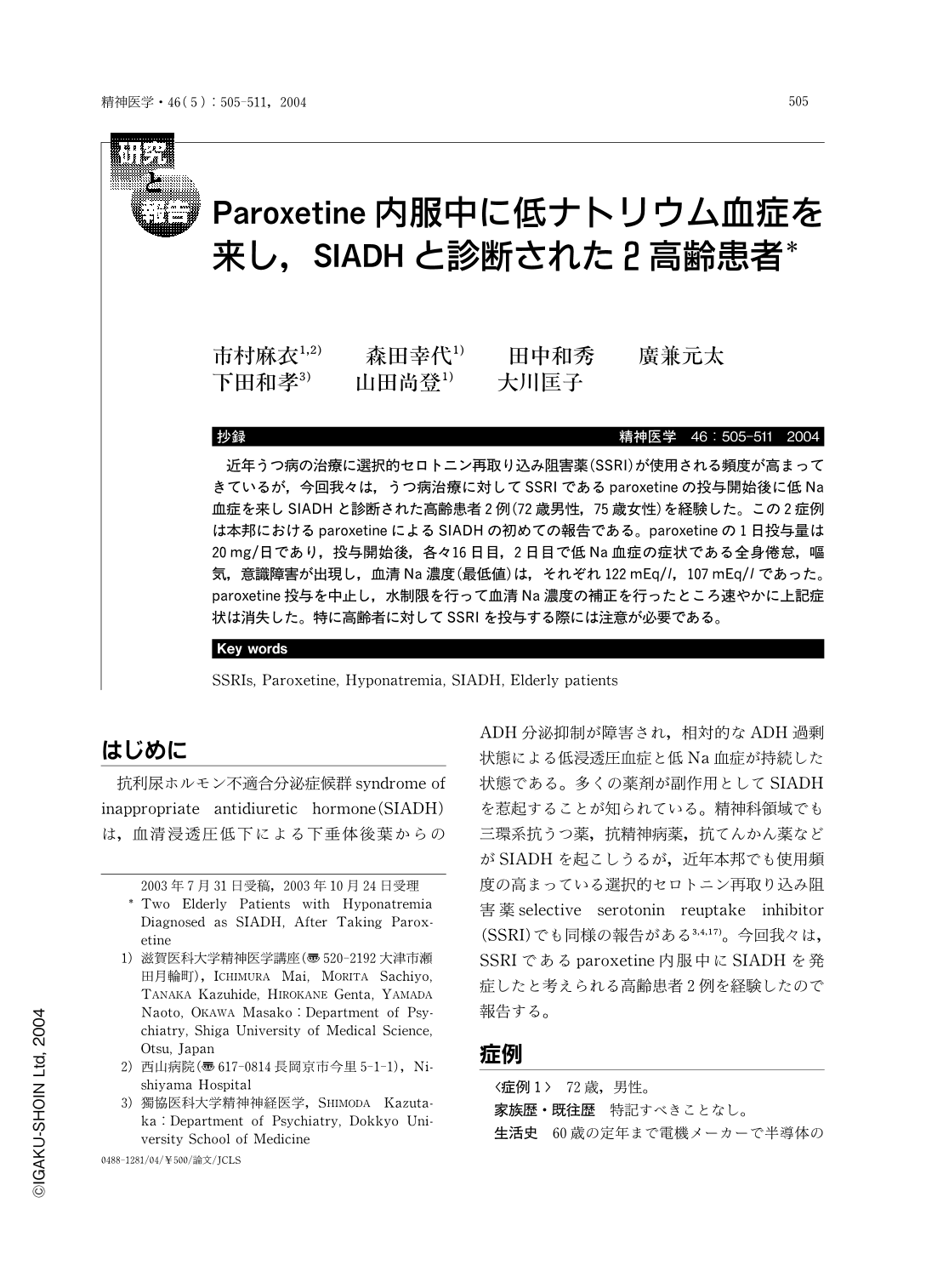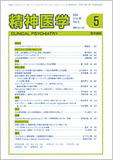Japanese
English
- 有料閲覧
- Abstract 文献概要
- 1ページ目 Look Inside
抄録
近年うつ病の治療に選択的セロトニン再取り込み阻害薬(SSRI)が使用される頻度が高まってきているが,今回我々は,うつ病治療に対してSSRIであるparoxetineの投与開始後に低Na血症を来しSIADHと診断された高齢患者2例(72歳男性,75歳女性)を経験した。この2症例は本邦におけるparoxetineによるSIADHの初めての報告である。paroxetineの1日投与量は20mg/日であり,投与開始後,各々16日目,2日目で低Na血症の症状である全身倦怠,嘔気,意識障害が出現し,血清Na濃度(最低値)は,それぞれ122mEq/l,107mEq/lであった。paroxetine投与を中止し,水制限を行って血清Na濃度の補正を行ったところ速やかに上記症状は消失した。特に高齢者に対してSSRIを投与する際には注意が必要である。
Summary
Selective serotonin reuptake inhibitors (SSRIs) have been widely prescribed for the treatment of depressed patients. Hyponatremia is uncommon, but has been reported as an adverse effect of SSRI. This is the first Japanese case report of the syndrome of inappropriate secretion of antidiuretic hormone (SIADH) induced by paroxetine. We reported here two patients, a 72-year-old male and a 75-year-old female, with SIADH after the administration of paroxetine for the treatment of depression. Their daily dose of paroxetine was 20mg per day. Both patients developed hyponatremia and had general malaise, nausea, and delirium or disorientation. One of the patients developed the symptoms 16 days after starting paroxetine and the other one developed them 2 days after starting the treatment. Their lowest serum sodium levels after taking paroxetine were 122 and 107 mEq/l, respectively. These values returned to normal range and their symptoms disappeared after discontinuation of paroxetine and restriction of fluid intake. Psychiatrists should pay attention to the change of serum sodium level after prescribing paroxetine especially in elderly patients.

Copyright © 2004, Igaku-Shoin Ltd. All rights reserved.


